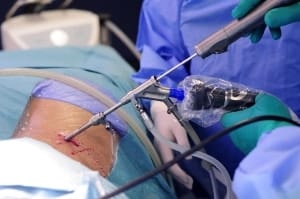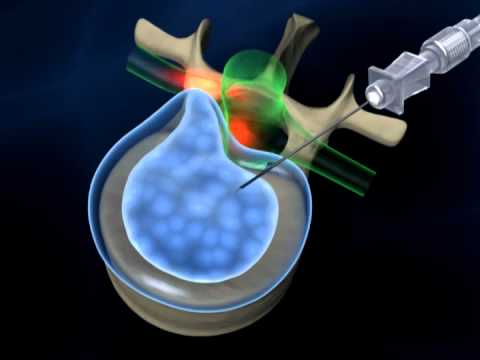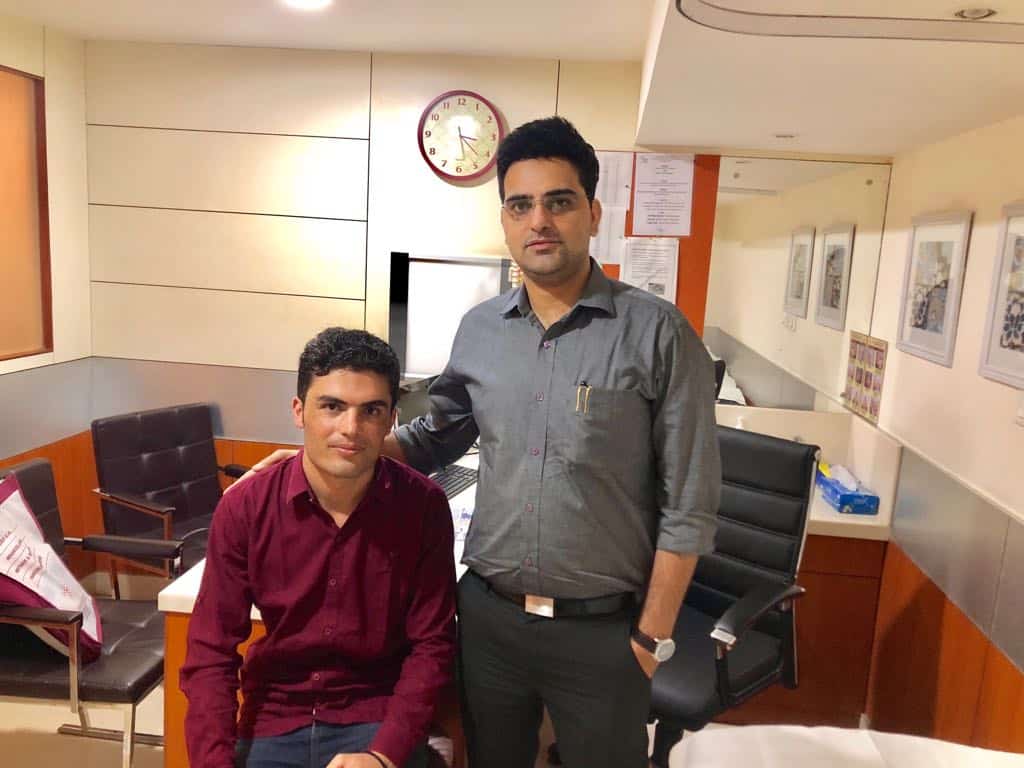Neck pain treatment is one of the most frequently requested therapies.Neck pain is slightly more common in women, but most people experience some form of neck pain at some point in their life. There are many causes of neck pain and they can generally be separated into “acute” causes and “chronic” causes. If the pain is suddenly occurs and lasts less than three months then it is considered “acute.” Acute neck pain is commonly caused by facet syndrome, acute muscle strain, or traumatic injury like whiplash. If the pain persists more than three months it is termed “chronic” neck pain. This pain can be from multiple sources, but is often due to facet joints irritation, discs, ligaments, and muscular sources.
This guide will help you understand
- what treatment options are available
Treatment
What treatment options are available?
Whenever possible, doctors prefer to use treatments other than surgery. The first goal of these nonsurgical treatments is to ease your pain and other symptoms.
Your health care providers will work with you to improve your neck movement and strength. They will also encourage healthy body alignment and posture. These steps are designed to slow the degeneration process and enable you to get back to your normal activities.
Medications
Many different types of medications are typically prescribed to help gain control of the symptoms of neck pain. There is no medication that will cure neck pain. Your doctor may prescribe medications to ease pain, fight inflammation, and to help you get a better night’s sleep.
Soft Neck Collar
If your pain is severe, your doctor may recommend a soft neck collar to keep your neck still for short periods of time. Resting the muscles and joints can help calm pain, inflammation, and muscle spasm.
Ice and Heat Applications
You might also be advised to place a cold pack on your neck for 10 to 15 minutes at a time, or you may be shown how to do a contrast treatment. Contrast treatments involve switching between a cold pack and a hot pack.
Physical Therapy
Some doctors ask their patients to work with a physical therapist. Therapy treatments focus on relieving pain, improving neck movement, and fostering healthy posture. A therapist can design a rehabilitation program to address your particular condition and to help you prevent future problems.
Injections
Spinal injections are used for both treatment and diagnostic purposes. There are several different types of spinal injections that your doctor may suggest. These injections usually use a mixture of an anestheticand some type of cortisone preparation. The anesthetic is a medication that numbs the area where it is injected. If the injection takes away your pain immediately, this gives your doctor important information suggesting that the injected area is indeed the source of your pain. The cortisone decreases inflammation and can reduce the pain from an inflammed nerve or joint for a prolonged period of time.

Some injections are more difficult to perform and require the use of a fluoroscope. A fluoroscope is a special type of X-ray that allows the doctor to see an X-ray picture continuously on a TV screen. The fluoroscope is used to guide the needle into the correct place before the injection is given.
- Epidural Steroid Injection: Neck pain or pain that spreads down the arm may require treatment with an epidural steroid injection (ESI). In an ESI, the medication mixture is injected into the epidural space around the nerve roots. Generally, an ESI is given only when other nonoperative treatments aren’t working. ESIs are not always successful in relieving pain. If they do work, they may only provide temporary relief.



- Selective Nerve Root Injection: Another type of injection to place steroid medication around a specific inflamed nerve root is called a selective nerve root injection. The fluoroscope is used to guide a needle directly to the painful spinal nerve. The nerve root is then bathed with the medication. Some doctors believe this procedure gets more medication to the painful spot. In difficult cases, the selective nerve root injection can also help surgeons decide which nerve root is causing the problem before surgery is planned.
- Facet Joint Injection: When the problem is thought to be in the facet joints, an injection into one or more facet joints can help determine which joints are causing the problem and ease the pain as well. The fluoroscope is used to guide a needle directly into the facet joint. The facet joint is then filled with medication mixture. If the injection immediately eases the pain, it helps confirm that the facet joint is a source of pain. The steroid medication will reduce the inflammation in the joint over a period of days and may reduce or eliminate your neck pain.
- Trigger Point Injections: Injections of anesthetic medications mixed with a cortisone medication are sometimes given in the muscles, ligaments, or other soft tissues near the spine. These injections are called trigger point injections. These injections can help relieve neck pain and ease muscle spasm and tender points in the neck muscles.
- Radiofrequency Ablation on Nerves
Minimally invasive spine procedures/surgery(MISS):
Procedures are designed to treat your spine conditions without complication of open surgery & short stay or same day discharge from hospital.
For other conditions, doctors prefer to try nonsurgical treatments for a minimum of three months before considering surgical options. Most people with neck pain tend to get better, not worse. Even people who have degenerative spine changes tend to gradually improve with minor interventions & minimally invasive spine procedures of nearly all spine procedure is to remove pressure from the nerves of the spine, to stop excessive motion between two or more vertebrae, or both.
Procedures performed with latest & advanced technique under image guidance for best outcome & near negligible complication. The type of procedure that is best depends on the patient’s conditions and symptoms. Interventions may be suggested when severe pain is not improving
– Cervical Nucleoplasty


– Cervical percutaneous Discectomy
– Anterior cervical endoscopic Discectomy
– Cervical Foraminotomy


– Cervical Nucleotomy


– Spinal cord stimulator
Consult Spinomax pain & spine center for advanced back pain treatment best suited for your spine.
Open Spine Surgery
Only rarely is open cervical spine surgery scheduled immediately. Your doctor may suggest immediate surgery if there are signs of pressure developing on the spinal cord or if your muscles are becoming weaker very rapidly or if there is bowel/bladder symptoms.
Foraminotomy
Laminectomy
ACDF
Cervical Fusion
Corpectomy and Strut Graft
Consult Spinomax pain & spine center for advanced back pain treatment best suited for your spine.
Rehabilitation
What should I expect after treatment?
Physical therapy treatment is often prescribed for two to four weeks for patients with neck pain. Treatments are designed to help ease pain and to improve mobility, strength, posture, and function. Therapy treatments will teach you how to control your symptoms and protect your neck in the years ahead. You may be given exercises to do on a regular basis.


Many patients need physical therapy outside of the hospital as well. They often see a therapist for one to three months, depending on the type of surgery. Therapy treatments are designed to calm pain and muscle spasm, teach patients to move safely, and help patients develop strength and mobility.
As the therapy sessions come to an end, the therapist may help the patient get back to work. The therapist can do a work assessment to ensure the patient can do his or her job safely. Some patients may need to modify their work or other activities to avoid future problems.
Consult Spinomax pain & spine center for advanced back pain treatment best suited for your spine.
Articles
- Cervical interlaminar epidural steroid injection for neck pain and cervical radiculopathy: effect and prognostic factors. Skeletal Radiol. 2007 May;36(5):431-6. Epub 2007 Mar 6 Kwon JW, Lee JW, Kim SH, Choi JY, Yeom JS, Kim HJ, Kwack KS, Moon SG, Jun WS, Kang HS. PMID: 17340166
- Epidemiology and risk factors for spine pain Neurol Clin. 2007 May;25(2):353-71 Rubin DI. PMID: 17445733
- Therapeutic cervical medial branch blocks in managing chronic neck pain: a preliminary report of a randomized, double-blind, controlled trial: clinical trial NCT0033272. Pain Physician. 2006 Oct;9(4):333-46 Manchikanti L, Damron K, Cash K, Manchukonda R, Pampati V. PMID: 17066118
- Neuromodulation of the cervical spinal cord in the treatment of chronic intractable neck and upper extremity pain: a case series and review of the literature.Pain Physician. 2007 Mar;10(2):305-11 Vallejo R, Kramer J, Benyamin R. PMID: 17387353
- Acupuncture for neck disorders. Spine. 2007 Jan 15;32(2):236-43. Trinh K, Graham N, Gross A, Goldsmith C, Wang E, Cameron I, Kay T. PMID: 17224820
- Cervical Spinal Metastasis: Anterior Reconstruction and Stabilization Techniques After Tumor Resection James K. Liu, M.D.; Ronald I. Apfelbaum, M.D.; Bennie W. Chiles Iii, M.D.; Meic H. Schmidt, M.D. Neurosurg Focus 15(5), 2003. © 2003 American Association of Neurological Surgeons Posted 12/17/2003
Consult Spinomax pain & spine center for advanced back pain treatment best suited for your spine.








